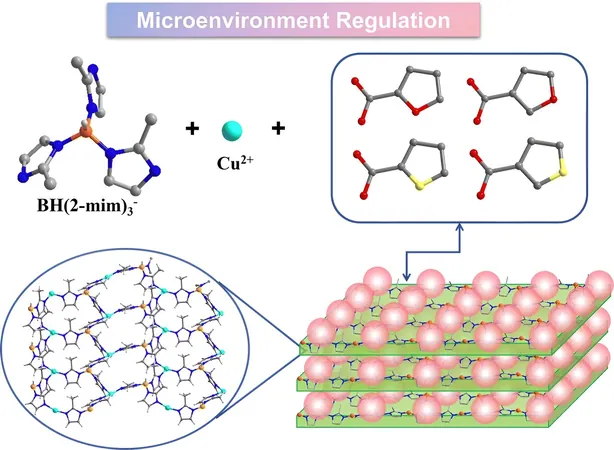
Revolutionary Cosmic-Ray Neutron Rover Transforms Soil Moisture Measurement on the Qinghai-Tibetan Plateau!
2024-10-10
Author: Li
Introduction
In the remote and rugged expanses of the eastern Qinghai-Tibetan Plateau, understanding soil moisture distribution is crucial for sustaining its delicate ecosystems and managing water resources. However, the diverse landscapes and extreme environmental conditions have long posed significant challenges to accurate measurements.
Development of the Cosmic-Ray Neutron Rover
Enter the groundbreaking cosmic-ray neutron rover, developed by a team of researchers led by Prof. Zhang Yongyong from the Northwest Institute of Eco-Environment and Resources at the Chinese Academy of Sciences. Their recent study, featured in the esteemed journal Geoderma, reveals how this innovative technology is revolutionizing the way scientists estimate mesoscale soil moisture in one of the world's most inhospitable terrains.
Technological Innovations and Methodology
Using mobile cosmic-ray neutron technology, the team is able to measure average soil moisture across vast areas—spanning hundreds of meters. Prof. Zhang highlights, “Aboveground biomass impacts our measurements significantly. By incorporating the Normalized Difference Vegetation Index (NDVI) into our calculations, we can accurately correct for the effects of vegetation, leading to remarkable improvements in the accuracy of our soil moisture assessments.”
Results and Precision of Measurements
In a groundbreaking achievement, the research found that after adjusting for vegetation, the root mean square error (RMSE) of soil moisture readings from the rover was an impressive ±0.025 g/g. This remarkable precision was achieved with a calibration parameter (N0_NDVI) set at 443 counts per minute (cpm), positioning this technology at the forefront of soil moisture measurement techniques.
Spatial Variability and Impact
The rover’s capability is further enhanced by its ability to analyze spatial variability; it operates with an average footprint radius of between 165 to 224 meters, enabling a mean penetration depth of 19 to 49 centimeters into the soil. This comprehensive data collection allows researchers to capture variations in soil moisture across different ecosystem types along the rover's travel path, providing insights that could inform better water resource management and ecological preservation strategies.
Conclusion and Future Implications
As scientists around the globe seek to address the impacts of climate change on delicate ecosystems, the success of this cosmic-ray neutron rover points toward new methodologies that could easily be adapted to other challenging environments, offering unprecedented accuracy in soil moisture measurement. Stay tuned for more updates as this technology continues to evolve and expand its applications in the fight against environmental degradation!


 Brasil (PT)
Brasil (PT)
 Canada (EN)
Canada (EN)
 Chile (ES)
Chile (ES)
 España (ES)
España (ES)
 France (FR)
France (FR)
 Hong Kong (EN)
Hong Kong (EN)
 Italia (IT)
Italia (IT)
 日本 (JA)
日本 (JA)
 Magyarország (HU)
Magyarország (HU)
 Norge (NO)
Norge (NO)
 Polska (PL)
Polska (PL)
 Schweiz (DE)
Schweiz (DE)
 Singapore (EN)
Singapore (EN)
 Sverige (SV)
Sverige (SV)
 Suomi (FI)
Suomi (FI)
 Türkiye (TR)
Türkiye (TR)